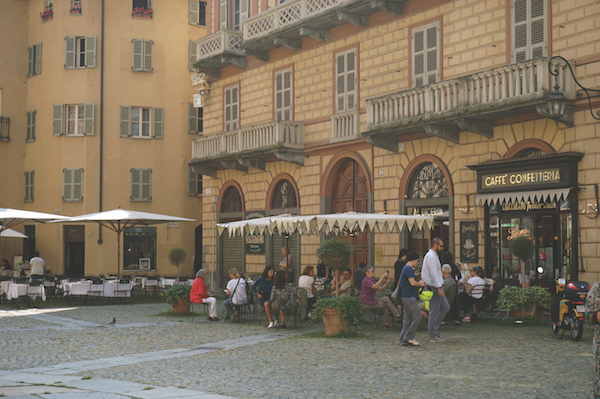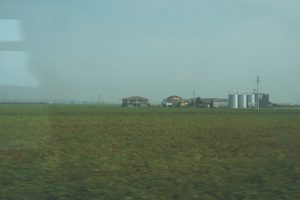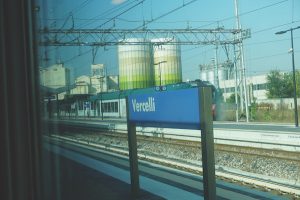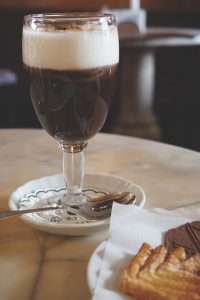Two decades ago Rachael Martin arrived in Italy, exploring the country by rail and dreaming of rooms with a view. Twenty years, one Italian husband and two kids later, she still has the memories of those first voyages of discovery…
Photos by Rachael Martin

Life on the train today consists of a group of Spanish students, various young people and a middle-aged woman who asks if the seat opposite me is free. We’re at Porta Garibaldi station in the north of Milan, near the trendy Isola district and Porta Nuova with its skyscrapers. We pull out of the station towards familiar sights. It’s that post-industrial landscape I find strangely comforting. There are the allotments, the rubbish dumps, and still it continues, that built-up sprawl with the usual graffiti and warehouses and grass between the railway lines, and it is still beautiful.

We stop at Magenta. There’s an old villa of the type that’s probably been passed through several generations and is now for sale. Maybe the upkeep is expensive or a lot of maintenance work is needed, as often happens. In any case, the owners have decided to sell. Then we travel over the River Ticino and out towards the countryside, lovely, yet often with excruciating levels of pollution because of its geographical position. There are no sea winds here to blow it all away. The pollution hangs, putrid and deadly, compounded by the traffic. And still the miles of warehouses and factories and housing continue, a flat monotony punctuated by someone’s whites hanging on a washing line near the train tracks.
The woman in front of me gets off and two young women move to sit opposite me. One of them has a tattoo along her arm that reads ‘nobody said it was easy’. They doze through their journey, waking only to look at their phones. It’s Sunday morning and conversation is clearly too much. The landscape has become more agricultural now. There’s the combine harvester, the ditches that irrigate the rice fields, and there’s a lock as we come into Novara, part of the town’s irrigation system of streams and canals. We’re nearing Vercelli now, renowned for rice growing, following the Via Francigena, the pilgrims’ way that went from Canterbury to Rome, then to Puglia and on to the Holy Land – though we’re travelling in the opposite direction and my destination is more worldly.

We pass rows of poplar trees that line the roads leading up to the large gates of the typical Lombardy farmhouses, set square with the internal courtyard within. The guy to the side of us gets off in Santhià, and the young women move across and take his seat and say grazie to me, for what I don’t quite know, only that women on trains seem to cluster together. The landscape builds up once more as we near Turin, yet first there’s Chivasso and a bridge across the river where a man is collecting pebbles. I don’t catch whether there’s anyone sitting under the red umbrella I see. Then it’s underground to Porta Susa Turin and the end of our line at the Porta Nuova station.
I arrive at Caffè Al Bicerin in the heart of the Quadrilatero Romano, Turin’s Roman quarter, now one of the city’s liveliest centres for restaurants and nightlife. Church bells are ringing and people are coming out of the Santuario della Consolata, as befits the history of the place. The café has been here since 1763, providing refreshment for those who had fasted for Holy Communion. It’s famous for its bicerin – that typical Turinese drink of hot chocolate and coffee with a thick layer of cold creamy milk – as it was here that the bicerin was reputedly invented. As this was a chocolate drink, and not actually food, it was also perfectly acceptable during Lent. It originally started as a variation on a fashionable 18th-century drink known as the bavareisa, a drink of coffee, chocolate, milk and syrup served in a large glass. The bicerin, on the other hand, was served in small glasses. (Bicerin is dialect for bicchierino – little glass.) It became popular, and other coffee houses within the city started to make it too.

Umberto Eco writes about both the bar and the drink in his novel The Prague Cemetery, also referring to Alexandre Dumas, who loved both the bicerin and the city of Turin. There’s the wooden panelling, the tables with their marble tops and the jars behind the counter, just like Eco wrote. There are so many lovely cafés to be found in so many cities and towns all over Italy, yet this place is special. The café also had a defining role in welcoming women into café culture at a time when the great majority of bars were run by men and were male haunts. This café was by a church though, and during the last century it was run mostly by women, who were known for their hospitality and the way they welcomed intellectuals who came here during the colder months.
I sit at one of the tables that line each side of the bar and order my bicerin with biscuits, once considered a snack fit for the upper classes and the court. Around me people are drinking their own bicerin. Then mine arrives. The milk on top is creamy and cold, yet underneath the coffee and chocolate is thick and hot and seeps through from below as I drink. I vaguely wonder whether it’s quite the done thing to dunk the biscuits, then decide it’s like finishing off your cappuccino with a spoon. There are some things you just have to do.
Click here for more of Rachael’s travels by train
